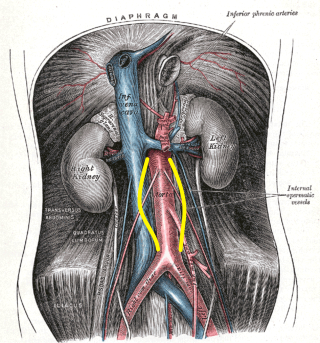Abdominal aortic aneurysm overview
|
Abdominal Aortic Aneurysm Microchapters |
|
Differentiating Abdominal Aortic Aneurysm from other Diseases |
|---|
|
Diagnosis |
|
Treatment |
|
Case Studies |
|
Abdominal aortic aneurysm overview On the Web |
|
Directions to Hospitals Treating Abdominal aortic aneurysm overview |
|
Risk calculators and risk factors for Abdominal aortic aneurysm overview |
Editor-In-Chief: C. Michael Gibson, M.S., M.D. [1]
Associate Editor-In-Chief: Cafer Zorkun, M.D., Ph.D. [2]
Overview
Abdominal aortic aneurysm, also written as AAA and often pronounced 'triple-A', is a localized dilatation of the abdominal aorta, that exceeds the normal diameter by more than 50%. The normal diameter of the infrarenal aorta is 2cm. It is caused by a degenerative process of the aortic wall, however the exact etiology remains unknown. It is most commonly located infrarenally (90%), other possible locations are suprarenal and pararenal. The aneurysm can extend to include one or both of the iliac arteries. An aortic aneurysm may also occur in the thorax.
References
Acknowledgements
The content on this page was first contributed by: C. Michael Gibson M.S., M.D.
